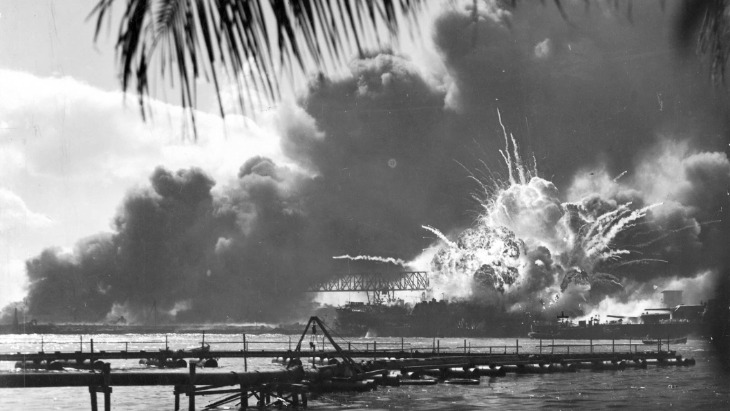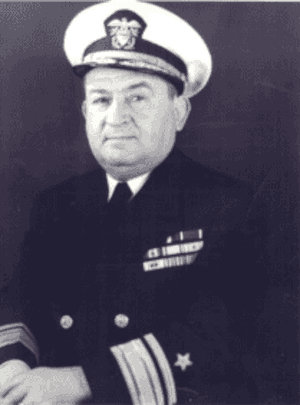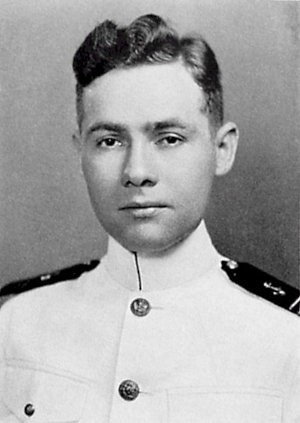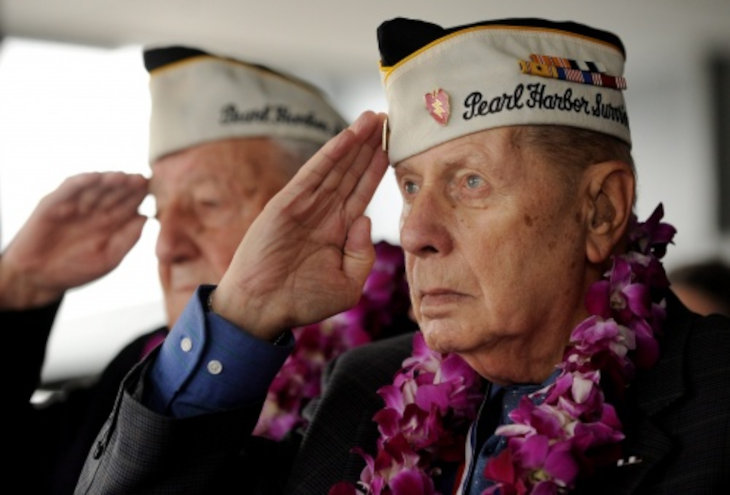 Vampire Weekend's Surprising Jewish Stories
Vampire Weekend's Surprising Jewish Stories


6 min read
Many Jews were among the heroes of that day that will live in infamy.
This week marks the 81st anniversary of the “date that will live in infamy,” the surprise Japanese bombing of the United States Naval Base at Pearl Harbor on Dec. 7, 1941, that killed more than 2,400 Americans and wounded another 1,000. Many Jews were among the heroes that day, including Solomon Silas Isquith, who saved hundreds from the torpedo ship he commanded in the waters of Hawaii Territory.
 Solomon Isquith
Solomon Isquith
Just before 8 a.m. that Sunday, hundreds of Japanese fighter planes swooped down from the sky and destroyed or damaged 20 American naval vessels, including eight battleships, and hundreds of airplanes. In its bid to overtake the South Pacific, Japan aimed to crush the U.S. fleet.
Lt. Cmdr. Isquith, the second of seven children born to a New York family, became the senior-ranking officer aboard the USS Utah in Pearl Harbor. After two torpedoes slammed his vessel, Isquith directed more than 500 crew members to abandon ship. He stayed aboard to oversee the evacuation until the ship capsized, then escaped through a porthole in the captain’s cabin.
“Although 58 crew members of the Utah lost their lives, an incredible 461 survived, which the survivors attributed to their excellent training and Isquith’s calm efficiency,” according to the latest issue of the Aleph Institute’s Jewish-American Warrior magazine.
The bravery of Lieutenant Commander Isquith earned him a Purple Heart and a Navy Cross.
Isquith then led a charge of heroes who sailed around the harbor on smaller boats in an effort to save more people. His bravery earned him a Purple Heart and a Navy Cross that read: “With extraordinary courage and disregard of his own safety, Lieutenant Commander Isquith directed the abandonment of the ship when it was capsizing rapidly, in such a cool and efficient manner that approximately 90 percent of the crew were saved.”
In 1947 Isquith ended a 30-year military career with the rank of rear admiral. He died in 1969 and was buried in Arlington National Cemetery.
Meanwhile on that fateful December day in 1941, Jewish ensigns Nathan Asher of New York and Milton Moldane of St. Louis were aboard the USS Blue, a destroyer that was at sea protecting the shores of Pearl Harbor. With the ship docked for refueling and the skipper on shore, Asher found himself in charge. He directed the crew in heading the Blue out to sea, as Moldane took charge of the forward machine guns.
 Midshipman Nathan F. Asher
Midshipman Nathan F. Asher
Photo thanks to Bill Gonyo
Moldane recalled the sight of Japanese planes buzzing down about 30 or 40 feet overhead. “Our ship kept firing at the planes as it headed out to sea. I went out to the bridge to help Asher when we both saw a Japanese plane that the Blue’s guns had hit go into a pineapple field. The men gave out a cheer when they saw the plane burst into flames.”
Other Pearl Harbor survivors included Pvt. Aaron Chabin, who was born to a Jewish family in Detroit and enlisted in the army at 18. One of the soldiers in his barracks was James Jones, author of the World War II novel “From Here to Eternity.”
The morning of Dec. 7, Chabin was relaxing on his bed in the barracks reading the Honolulu Advertiser when he and his fellow soldiers heard an explosion. They were shocked and totally unprepared, he recalled.
 Aaron Chabin, right
Aaron Chabin, right
With Japanese planes swarming above, Chabin ran to his post at the communications center. His commander handed him a loaded gun, telling him to save the last bullet. “He handed me my weapon, and said ‘Don’t be taken prisoner.’ ”
Chabin spent the rest of the day relaying phone messages between officers and watching Pearl Harbor go up in smoke and flames. Fifty years later, he returned for a commemoration of the attack. He was moved to see his name on the active duty roster from 1941 and visit his old barracks. A nonagenarian, he passed away in 2017.
Other Jewish witnesses to the carnage at Pearl Harbor died in the prime of life. They included Charles M. Stern Jr., a 26-year-old ensign on the USS Oklahoma, one of 429 crewmen who died in a Japanese torpedo attack on their ship. The Navy spent the next three years recovering their remains, which were interred in a mass grave in the National Memorial Cemetery of the Pacific—known as the Punchbowl—in Honolulu.
 Charles M. Stern
Charles M. Stern
Stern’s remains were among those disinterred in 2015 in an attempt to identify the Oklahoma’s fallen soldiers. He was accounted for in 2018, according to a press release from the Defense POW/MIA Accounting Agency. Scientists used dental records and anthropological analysis, as well as circumstantial and material evidence, to determine the identity of the remains. Stern’s cousin provided a DNA sample that was used to make the match.
On July 21, 2019—78 years after Pearl Harbor—Stern was buried in an Albany, N.Y., Jewish cemetery with full military naval honors.
Many other Jewish men fought and gave their lives at Pearl Harbor. Their legacy of service remains a poignant slice of American Jewish history.
 Burial of Charles Stern, nearly 8 decades after Pearl Harbor (Will Waldron/Times Union)
Burial of Charles Stern, nearly 8 decades after Pearl Harbor (Will Waldron/Times Union)
The day after the assault, President Franklin D. Roosevelt asked Congress to declare war on Japan. The bombing of Pearl Harbor on the southern coast of the island of Oahu—18 years before Hawaii became the 50th state—marked the U.S. entry into World War II. Young Americans from all walks of life, Jews included, enlisted. In their ranks were the rabbis who would serve them.
More than 550,000 Jews joined the U.S. armed forces during World War II. They continued a long tradition of Jewish military service and valor that predates the Revolutionary War and birth of America.
Rabbi Eli Estrin, an Air Force reserve chaplain and the military personnel liaison for the Aleph Institute based in Miami, estimates that 15,000 Jews serve in the U.S. military today. Aleph provides them with Torah study material, Jewish-American Warrior magazines, holiday supplies and more.
As he says, “We do all that we can to make sure every Jew in the U.S. military feels that they're connected to the Jewish people and have the ability to serve God while serving their country.”
For more information about Pearl Harbor National Memorial in Honolulu, visit https://www.nps.gov/perl/index.htm
